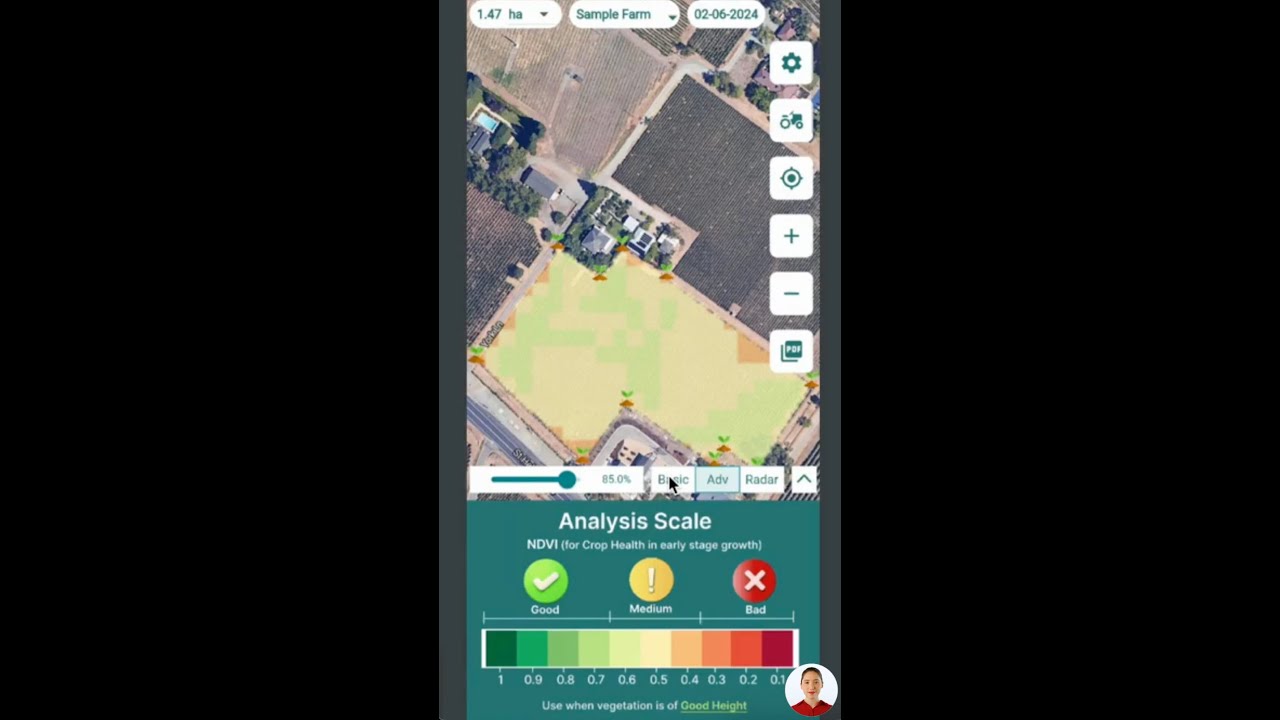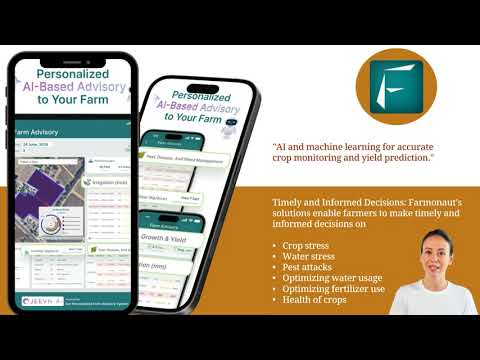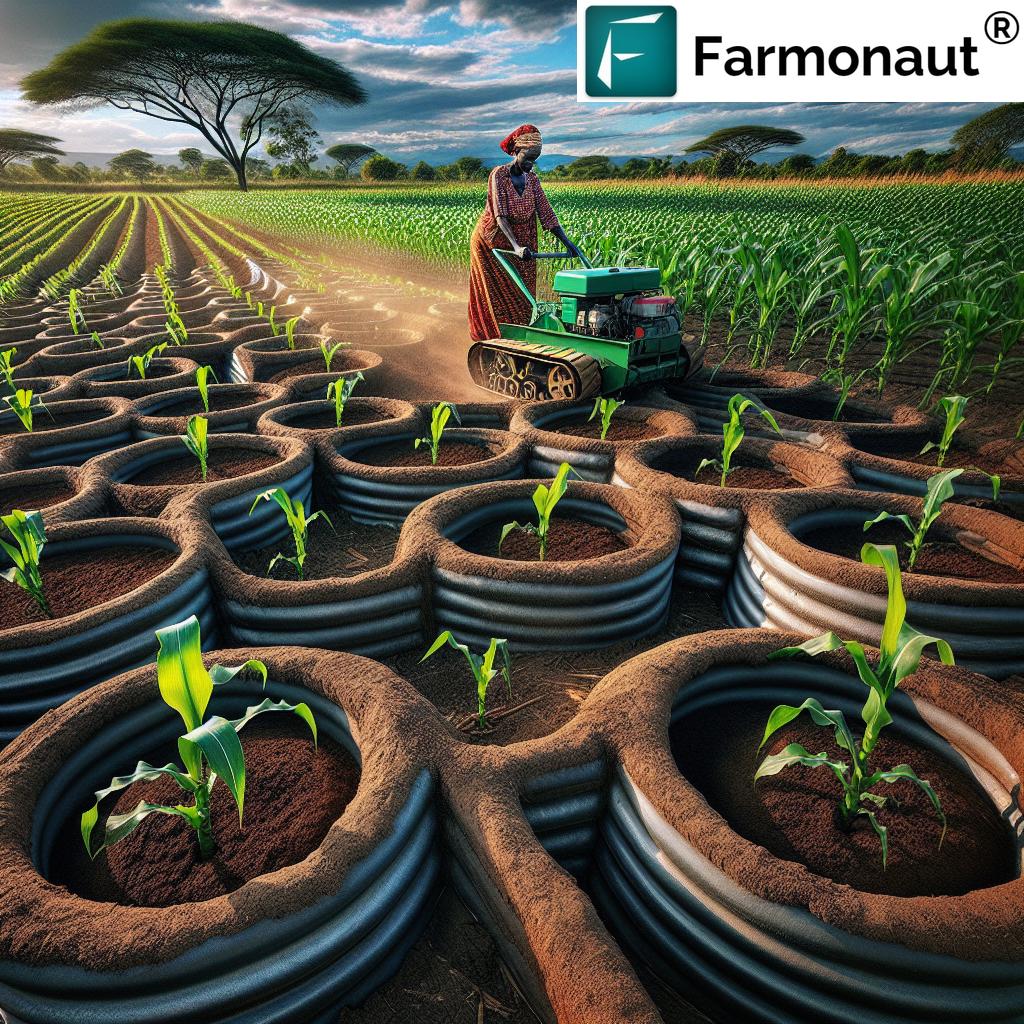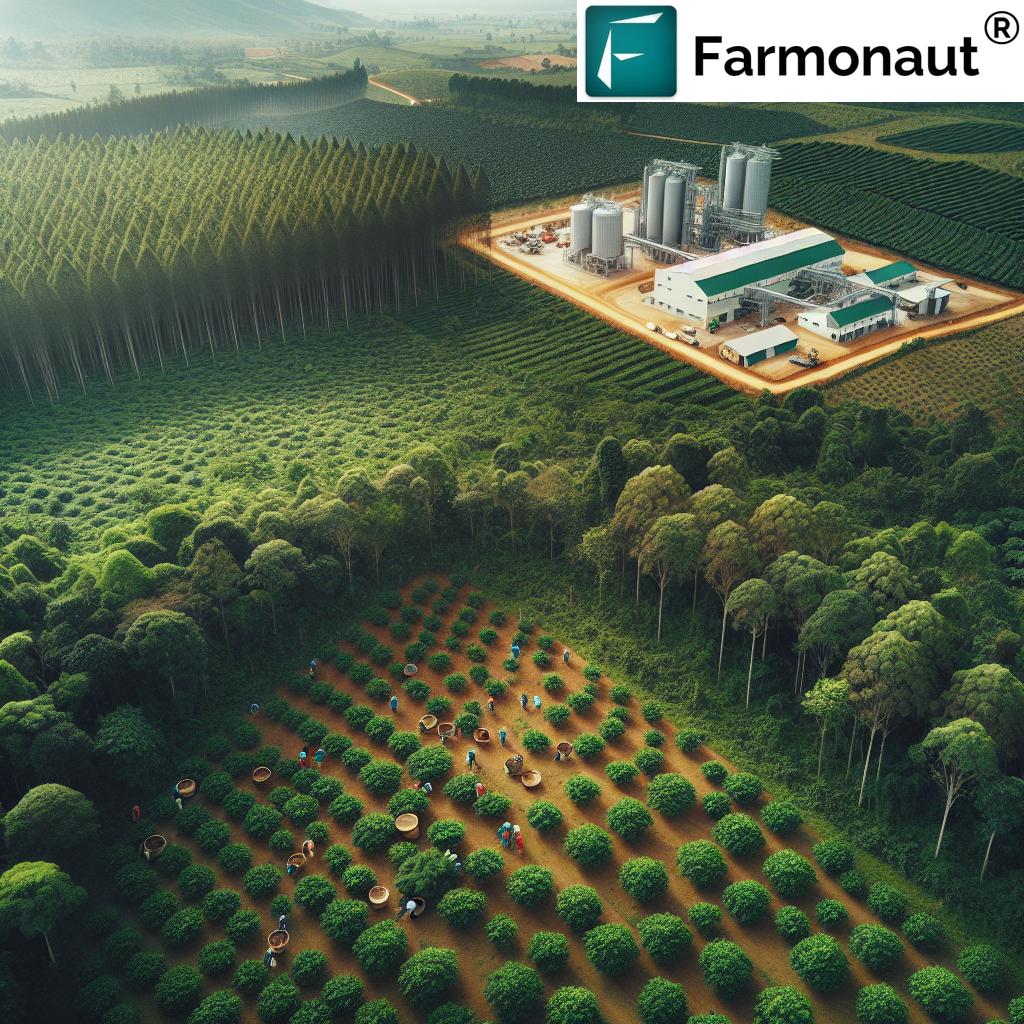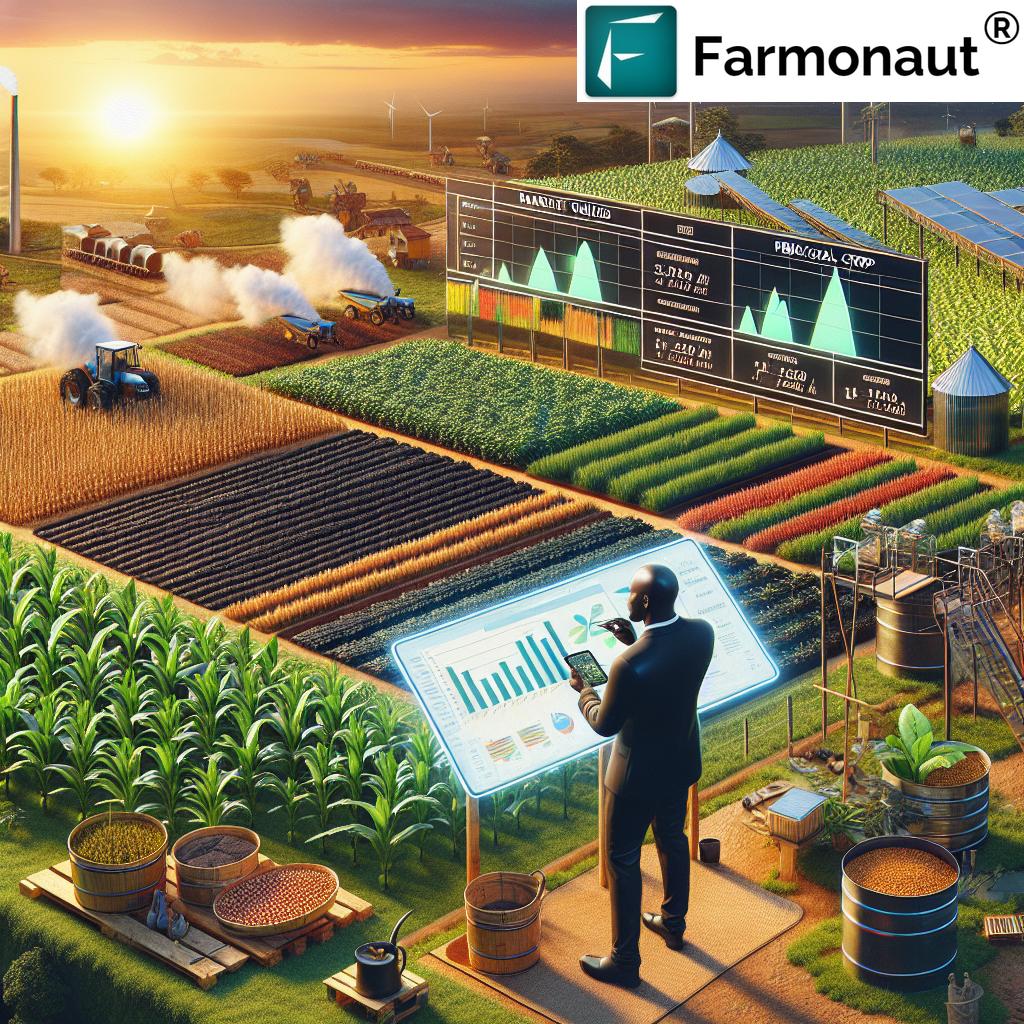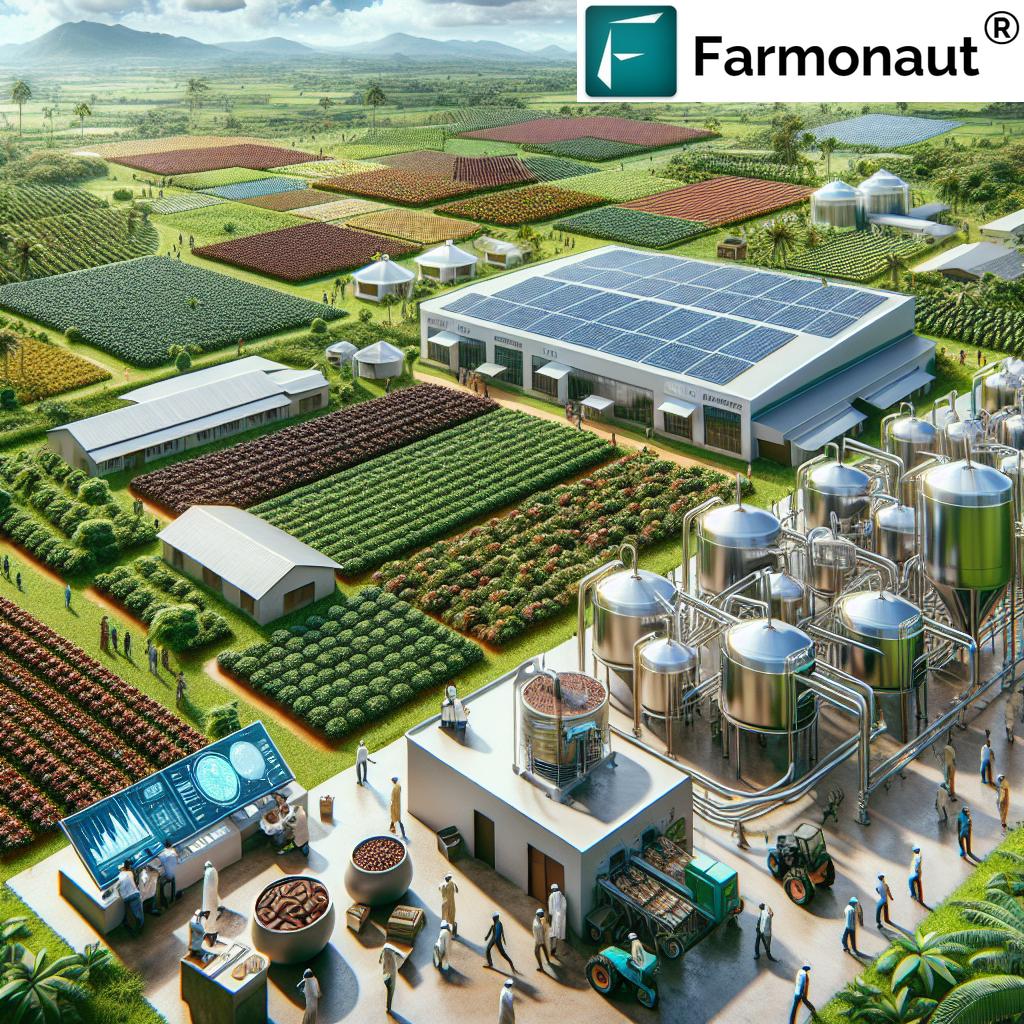Overcoming Water Scarcity: Sustainable Solutions for Baidoa’s Agricultural Crisis and Food Security
“Baidoa’s agricultural crisis has led to a 60% reduction in crop yields over the past decade due to water scarcity.”
In the heart of Somalia, Baidoa faces a critical juncture in its agricultural journey. As we delve into the complexities of water scarcity in agriculture and its profound impact on the Somalia farming crisis, we uncover a narrative of resilience, innovation, and hope. This blog post explores the multifaceted challenges confronting Baidoa’s farmers and presents sustainable solutions to revitalize the region’s agricultural sector and ensure long-term food security.
Understanding the Scope of Baidoa’s Agricultural Challenges
Baidoa, a city in south-central Somalia, has long been considered the country’s breadbasket. However, the region now grapples with a severe water scarcity that threatens its agricultural prowess and the livelihoods of countless farmers. The drought impact on crops has been devastating, leading to a significant decline in agricultural production and exacerbating food insecurity across the region.
- Prolonged periods of drought have depleted water resources
- Inadequate irrigation systems hinder efficient water use
- Limited access to modern farming technologies and inputs
- Soil degradation due to unsustainable farming practices
These factors collectively contribute to a vicious cycle of low productivity and economic hardship for Baidoa’s farming community. To address these issues effectively, we must first understand the intricate relationship between water availability and agricultural sustainability in this arid region.
The Ripple Effects of Water Scarcity on Baidoa’s Agriculture
Water scarcity in Baidoa has far-reaching consequences that extend beyond crop failure. It affects every aspect of the agricultural value chain and the broader socio-economic fabric of the region.
- Reduced crop yields lead to food shortages and price hikes
- Farmers struggle to repay loans, impacting rural financial systems
- Migration of rural populations to urban areas in search of alternative livelihoods
- Increased vulnerability to climate shocks and food insecurity
To illustrate the severity of the situation, let’s consider the following data:
| Impact Area | Pre-Crisis (2010) | Current (2023) | % Change |
|---|---|---|---|
| Average Crop Yield (tons/hectare) | 2.5 | 1.0 | -60% |
| Water Availability (m³/person/year) | 1200 | 500 | -58% |
| Food Insecure Population (%) | 20% | 45% | +125% |
These stark figures underscore the urgent need for innovative solutions to address water scarcity and revitalize Baidoa’s agricultural sector.
Innovative Approaches to Water Conservation in Farming
To combat the water crisis and ensure sustainable agriculture practices in Baidoa, we must implement a range of water conservation techniques. Here’s a comprehensive comparison of potential solutions:
| Technique | Water Savings Potential | Implementation Complexity | Long-term Impact |
|---|---|---|---|
| Drip Irrigation | High | Moderate | Transformative |
| Rainwater Harvesting | Medium | Easy | Significant |
| Drought-Resistant Crop Varieties | Medium | Moderate | Significant |
| Mulching | Low | Easy | Moderate |
| Precision Agriculture | High | Challenging | Transformative |
Implementing these water conservation techniques could significantly improve agricultural productivity in Baidoa. For instance, drip irrigation systems have the potential to reduce water usage by up to 60% compared to traditional flood irrigation methods, while still maintaining or even increasing crop yields.
Leveraging Technology for Sustainable Agriculture
In the digital age, technology plays a crucial role in revolutionizing agricultural practices, especially in water-stressed regions like Baidoa. Advanced tools and platforms can provide farmers with valuable insights to optimize their water usage and improve crop yields.
One such innovative solution is Farmonaut, a satellite-based farm management platform that offers real-time crop health monitoring and AI-driven advisory services. By utilizing Farmonaut’s technology, farmers in Baidoa can:
- Monitor crop health and detect water stress early
- Receive personalized irrigation recommendations
- Track soil moisture levels for optimal water management
- Access weather forecasts for informed decision-making
To learn more about how satellite data can transform farming practices, watch this informative video:
By integrating such technologies, Baidoa’s farmers can make data-driven decisions to conserve water and improve their agricultural output.
Building Resilient Water Infrastructure
Addressing the water scarcity in Baidoa requires significant investments in water infrastructure. The development of robust water storage and distribution systems is crucial for ensuring a stable water supply for agriculture.
- Construction of small-scale dams and reservoirs
- Implementation of efficient water distribution networks
- Development of groundwater recharge systems
- Establishment of community-managed water points
These infrastructure projects not only provide immediate relief to farmers but also contribute to long-term water security in the region. For example, the construction of small-scale dams can capture and store rainwater during the wet season, providing a reliable water source during dry periods.

The image above illustrates a potential water storage facility that could significantly improve water availability for agriculture in Baidoa.
Promoting Drought-Resistant Crops and Diversification
Adapting to water scarcity in Baidoa also involves rethinking crop selection and farming strategies. By promoting drought-resistant crop varieties and encouraging crop diversification, we can enhance the resilience of the agricultural sector.
- Introduction of drought-tolerant sorghum and millet varieties
- Promotion of water-efficient legumes like cowpeas
- Integration of agroforestry practices
- Encouragement of crop rotation to improve soil health
These strategies not only help conserve water but also contribute to improved food security and nutritional diversity in the region.
“Implementing sustainable irrigation methods in Baidoa could potentially increase water efficiency by 40% in local farming practices.”
Capacity Building and Farmer Education
Empowering farmers with knowledge and skills is crucial for the successful implementation of water conservation techniques and sustainable agriculture practices. We must focus on comprehensive capacity-building programs that address:
- Water-efficient irrigation techniques
- Soil and water conservation methods
- Climate-smart agricultural practices
- Use of modern farming technologies and tools
By equipping farmers with the necessary knowledge and skills, we can ensure the long-term sustainability of agricultural interventions in Baidoa.
Leveraging Farmonaut’s Technology for Baidoa’s Agricultural Revival
In the context of Baidoa’s agricultural challenges, Farmonaut’s satellite-based crop health monitoring system offers a promising solution. By providing real-time insights into crop health and water stress, Farmonaut empowers farmers to make informed decisions about irrigation and resource allocation.
Here’s how Farmonaut’s technology can benefit Baidoa’s farmers:
- Early detection of crop stress due to water scarcity
- Optimization of irrigation schedules based on actual crop needs
- Improved resource allocation through precise farm management
- Access to expert agricultural advice through AI-powered systems
To explore Farmonaut’s advanced crop monitoring capabilities, watch this informative video:
By integrating Farmonaut’s technology into their farming practices, Baidoa’s agricultural community can take a significant step towards sustainable water management and improved crop yields.
Policy Recommendations for Sustainable Water Management
Addressing Baidoa’s water scarcity and agricultural challenges requires a supportive policy environment. We recommend the following policy measures to promote sustainable water management and agricultural development:
- Establishment of a comprehensive water management framework
- Implementation of water pricing policies to encourage conservation
- Creation of incentives for adoption of water-efficient technologies
- Development of drought preparedness and response plans
- Promotion of public-private partnerships in water infrastructure development
These policy interventions can create an enabling environment for sustainable agriculture and water conservation in Baidoa.
The Role of Community Engagement in Water Conservation
Successful implementation of water conservation strategies in Baidoa requires active community participation. Engaging local communities in water management initiatives can lead to more sustainable outcomes and foster a sense of ownership.
- Formation of water user associations
- Implementation of community-based watershed management programs
- Promotion of traditional water conservation knowledge
- Establishment of community-led monitoring systems
By involving local communities in water conservation efforts, we can ensure that interventions are culturally appropriate and sustainable in the long term.
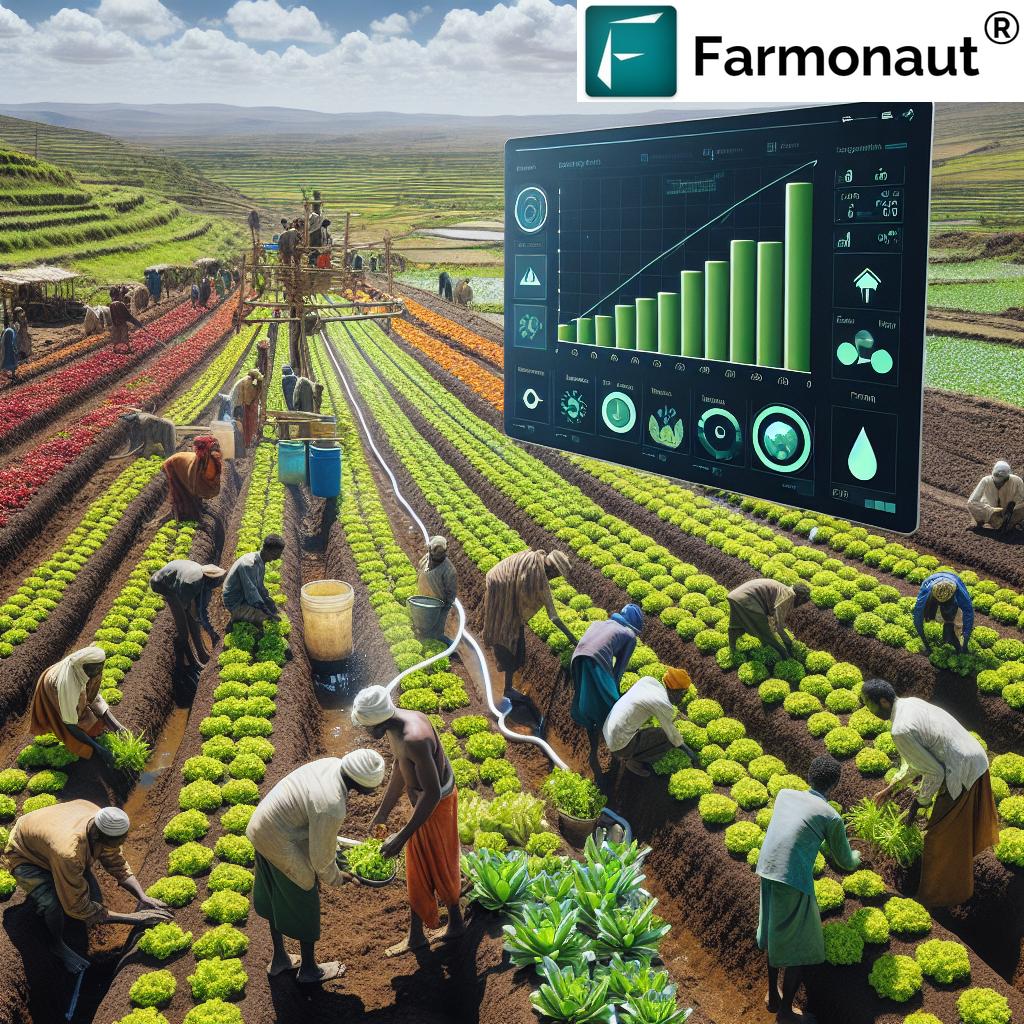
The image above depicts a community meeting focused on water conservation strategies in Baidoa.
Financing Sustainable Agriculture in Baidoa
Implementing sustainable agricultural practices and water conservation techniques requires significant financial investment. We must explore innovative financing mechanisms to support Baidoa’s farmers in adopting these practices:
- Microfinance programs tailored for small-scale farmers
- Green bonds for water infrastructure development
- Results-based financing for water conservation projects
- Public-private partnerships for agricultural technology adoption
By providing access to appropriate financial products and services, we can accelerate the transition towards sustainable agriculture in Baidoa.
Monitoring and Evaluation of Water Conservation Initiatives
To ensure the effectiveness of water conservation and sustainable agriculture initiatives in Baidoa, robust monitoring and evaluation systems are essential. These systems should track:
- Water use efficiency in agriculture
- Crop yields and productivity
- Adoption rates of water conservation techniques
- Socio-economic impacts on farming communities
Regular monitoring and evaluation will allow for adaptive management and continuous improvement of interventions.
The Future of Agriculture in Baidoa: A Vision of Sustainability
As we look to the future, we envision a Baidoa where water scarcity no longer threatens agricultural productivity and food security. By implementing the strategies and solutions discussed in this blog post, we can work towards:
- A resilient agricultural sector that thrives despite climatic challenges
- Improved food security and nutrition for Baidoa’s population
- Sustainable livelihoods for farming communities
- A model of water-efficient agriculture for other arid regions
Realizing this vision requires concerted efforts from all stakeholders, including farmers, policymakers, technology providers, and the international community.
Conclusion: A Call to Action for Sustainable Agriculture in Baidoa
The agricultural crisis in Baidoa, fueled by water scarcity, presents significant challenges. However, it also offers an opportunity to reimagine and rebuild a more sustainable and resilient agricultural sector. By embracing innovative technologies, implementing water conservation techniques, and fostering community engagement, we can overcome these obstacles and ensure long-term food security for Baidoa and beyond.
We urge all stakeholders to take action in support of Baidoa’s agricultural revival. Whether you’re a farmer looking to adopt sustainable practices, a policymaker shaping the future of agriculture, or a technology provider offering innovative solutions, your contribution is crucial in this journey towards sustainable agriculture and food security in Baidoa.
Together, we can transform Baidoa’s agricultural landscape, turning water scarcity into an opportunity for innovation and sustainable growth.
FAQ Section
- Q: What are the main causes of water scarcity in Baidoa?
A: The main causes include prolonged droughts, inadequate water infrastructure, and unsustainable water use practices in agriculture. - Q: How does water scarcity affect food security in Baidoa?
A: Water scarcity leads to reduced crop yields, which in turn results in food shortages and increased food prices, compromising food security for the local population. - Q: What are some immediate steps farmers in Baidoa can take to conserve water?
A: Farmers can implement mulching, adopt drought-resistant crop varieties, and improve irrigation efficiency through techniques like drip irrigation. - Q: How can technology help address water scarcity in agriculture?
A: Technologies like Farmonaut’s satellite-based crop monitoring can help farmers optimize water use by providing real-time data on crop health and soil moisture levels. - Q: What role can the government play in addressing Baidoa’s agricultural water crisis?
A: The government can invest in water infrastructure, implement supportive policies, and provide incentives for adopting water-efficient farming practices.
For more information on how satellite technology can revolutionize farming practices and address water scarcity, explore Farmonaut’s solutions:
For developers interested in integrating Farmonaut’s satellite and weather data into their own systems, check out our API and API Developer Docs.
Earn With Farmonaut: Affiliate Program
Earn 20% recurring commission with Farmonaut’s affiliate program by sharing your promo code and helping farmers save 10%. Onboard 10 Elite farmers monthly to earn a minimum of $148,000 annually—start now and grow your income!


